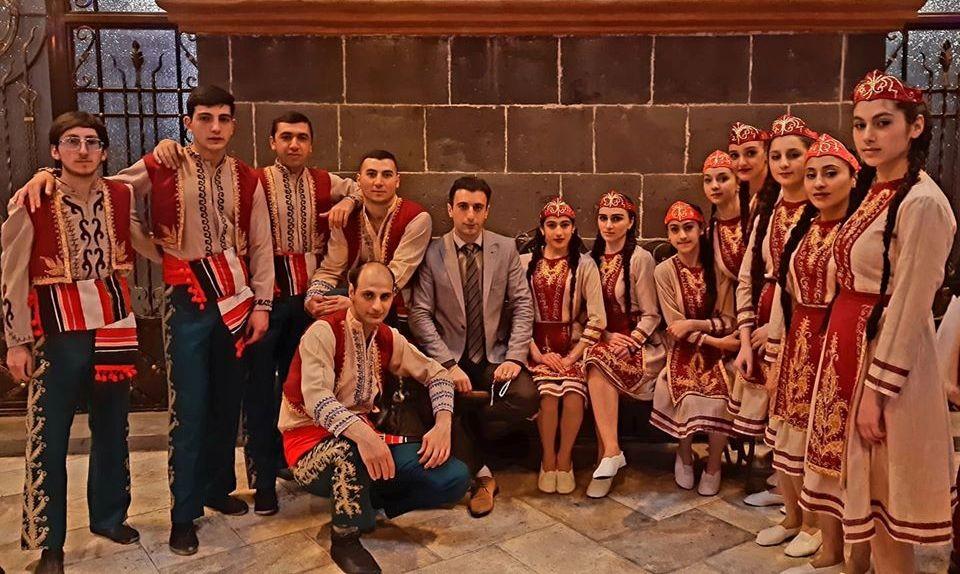
To Teach or Grow Strawberries? Gyumri Dance Instructor Seeks to Merge the Two Pursuits Amidst the Coronavirus Pandemic
Adapting to the restrictions created by the coronavirus hasn’t been easy for dance instructors and their students in Armenia.
Those teaching dance must make decisions based on safety concerns while also considering convenience factors.
Should dancers wear masks while training? Should classes be held outside?
Mihran Baghdasaryan, who heads the Kumayri dance studio in Gyumri, intends to resume classes in June, albeit in a new format.
“We have a permit to hold dance classes, but the virus restrictions make things a bit difficult. There are some 30-40 groups throughout the province that operate in schools or other municipal spaces. I have a group in the village of Karnout, and we practice in the school. I have another group that practices in Gyumri’s P.S. 5. Schools are now closed by government order. It’s not realistic for the principal to open the doors just for us,” says Baghdasaryan.
A patch of grass or a paved yard for dancers wearing lightweight slippers cannot replace the professional parquet on which they usually practice. Many groups practicing in schools, rural or urban, may not provide a professional dance setting, but at least they come with a flat floor.
"We mainly teach folk dances. Wearing foot slippers, it’s impossible to organize all that outside. The children’s feet will ache. If they were learning hip-hop or break-dancing, we could manage to practice outside. Also, these are individual dances and there’s no need to hold hands. Ethnographic dances are collective in nature, requiring shoulder-to-shoulder and hand-to-hand contact. The other question is whether to wear a mask during rehearsals. The dancer must breathe and breathe freely. Masks are mandatory in enclosed spaces. The children really can’t breathe normally,” Baghdasaryan says.
Baghdasaryan believes that dancing, unlike other forms of physical exercise, creates the right kind of immunity, which is vital to ward off viruses.
"Athletes usually have a high level of immunity, but some of them have contracted the virus. Dancers develop a completely different muscular system. Their breathing is correct, and so on. I believe we are well placed in terms of immunity,” says Baghdasaryan.
The dance instructor says the real question is whether parents will send their kids to practice once classes resume. Furthermore, it’s not yet clear who will be responsible for maintaining hygiene regulations at rehearsal sites - the school principal or the choreographer.
Rehearsal areas need to be disinfected both before and after classes. Children’s temperatures need to taken as well. Hand-held thermometers are costly, however. Class sizes must also be halved to facilitate social distancing.
Baghdasaryan says the new rehearsal format will just multiply the workload for instructors like him. Matters get worse if there are two or three groups must rehearse per day.
He says that many of his colleagues are in the same boat and that some will not resume classes before September.
According to Baghdasaryan, it was never easy organizing dance groups in remote villages and now it’s gotten even more taxing.
"I know instructors that don't have a car, but they visit the villages nevertheless. They go by train or by bus. Whatever it takes. They are driven by a love for the kids and for the art. They want the children to have a positive outlet and to prove to themselves that they are in no way inferior to their urban counterparts,” says Baghdasaryan.
In addition to the Kumayri Dance Studio, which he founded, Mihran Baghdasaryan teaches at the municipal Children's Art Palace in Gyumri.
Here, he makes minimum wage. It may serve as symbolic moral support for his efforts, but financially, it’s a drop in the bucket.
"In April I realized that our sector faces problems down the road. It’s possible that it will last for only a year. This is the worst-case scenario. It was already clear that any group-type operation faces long-term crisis. That's why I decided to grow strawberries. It’s how my idea of creating Urban Farm was born. I figured I could grow things in a limited area, a basement, garage, etc. You don’t need a plot of land,” Mihran says, inviting me into his new 20 square meter greenhouse.
The strawberry bushes in wooden boxes placed above the ground look great.
Baghdasaryan hopes to taste the first ripe fruit in the fall. Another way is to grow strawberries is downstairs, in the basement.
The dance instructor then voices a philosophical note on today’s new reality and his life.
"Today, the pandemic dictates conditions. We must not only adapt, but also think of new options and directions to survive. In the end, even artists need to eat. Turns out that farming is the most sustainable, the growing of crops. So, if we can’t dance, we’ll grow strawberries. When things settle down, I’ll combine the two pursuits.
 Videos
Videos Photos
Photos
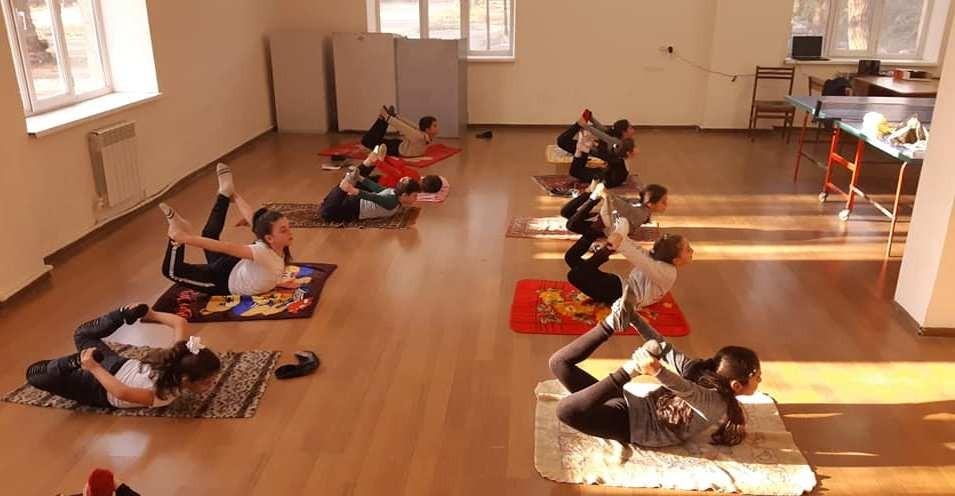
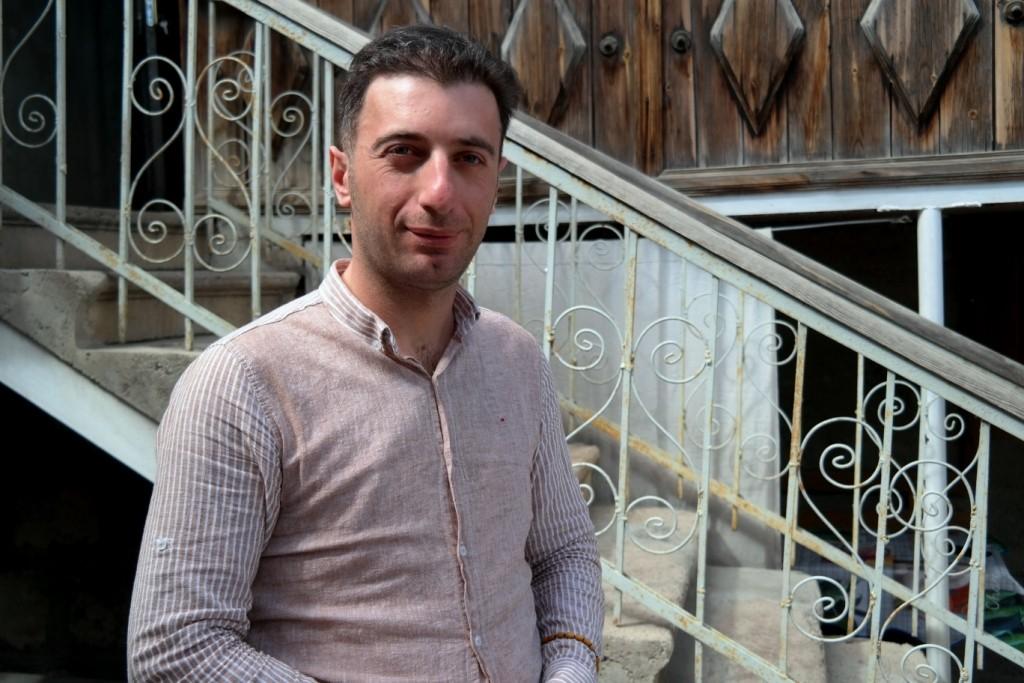
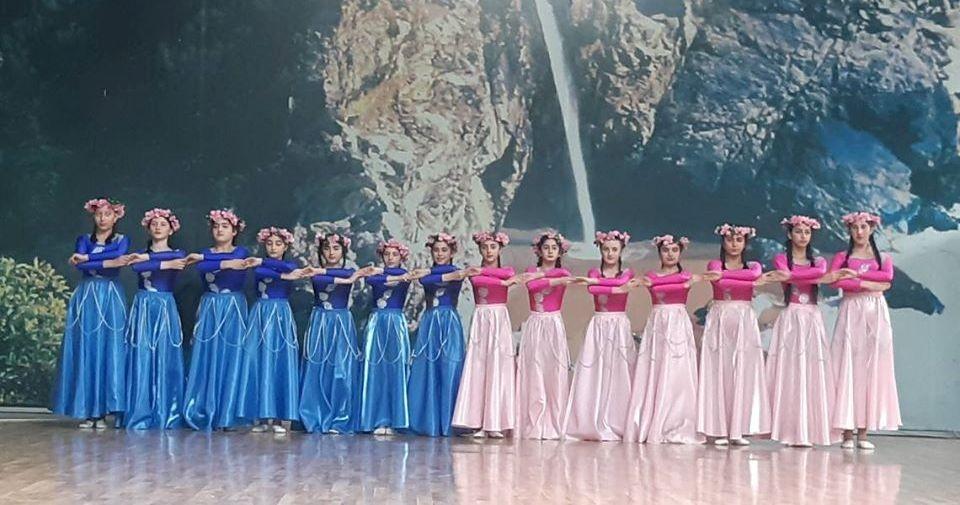
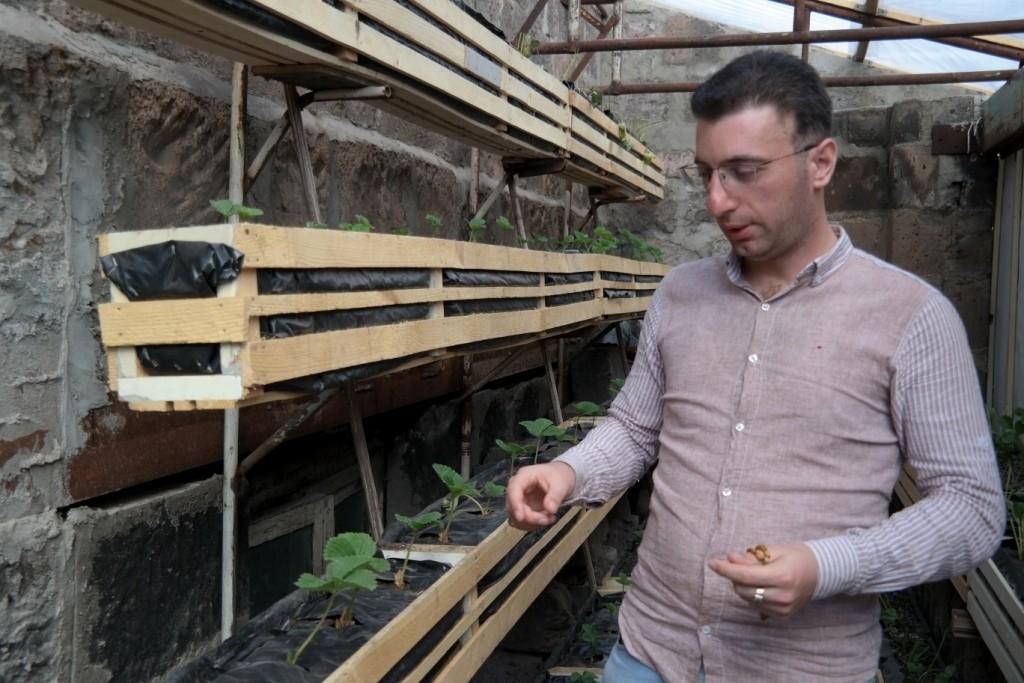
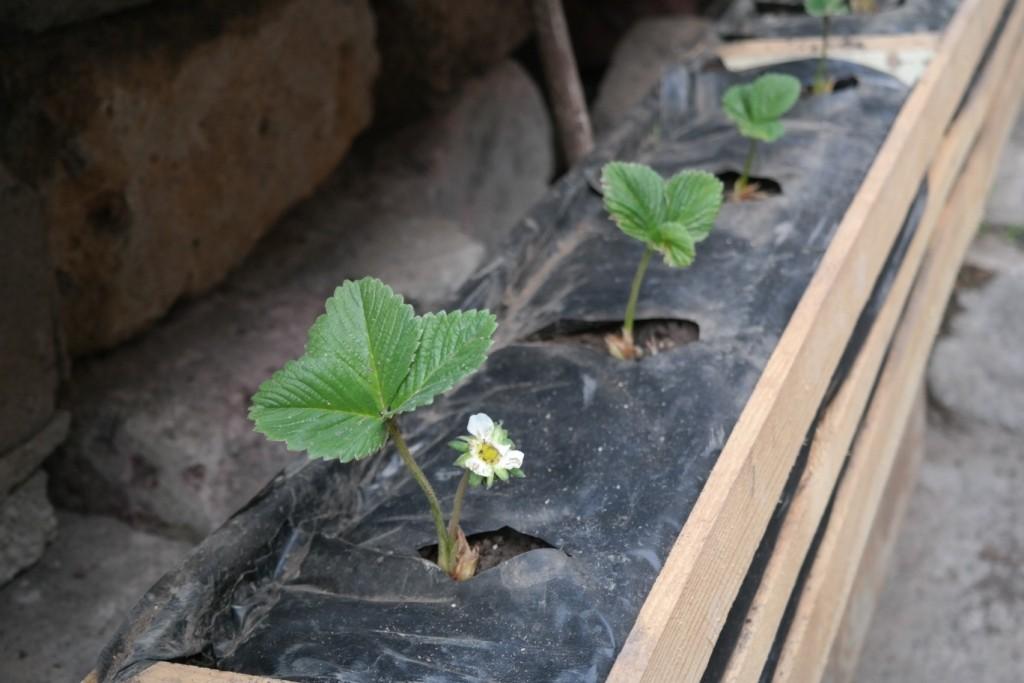
Write a comment